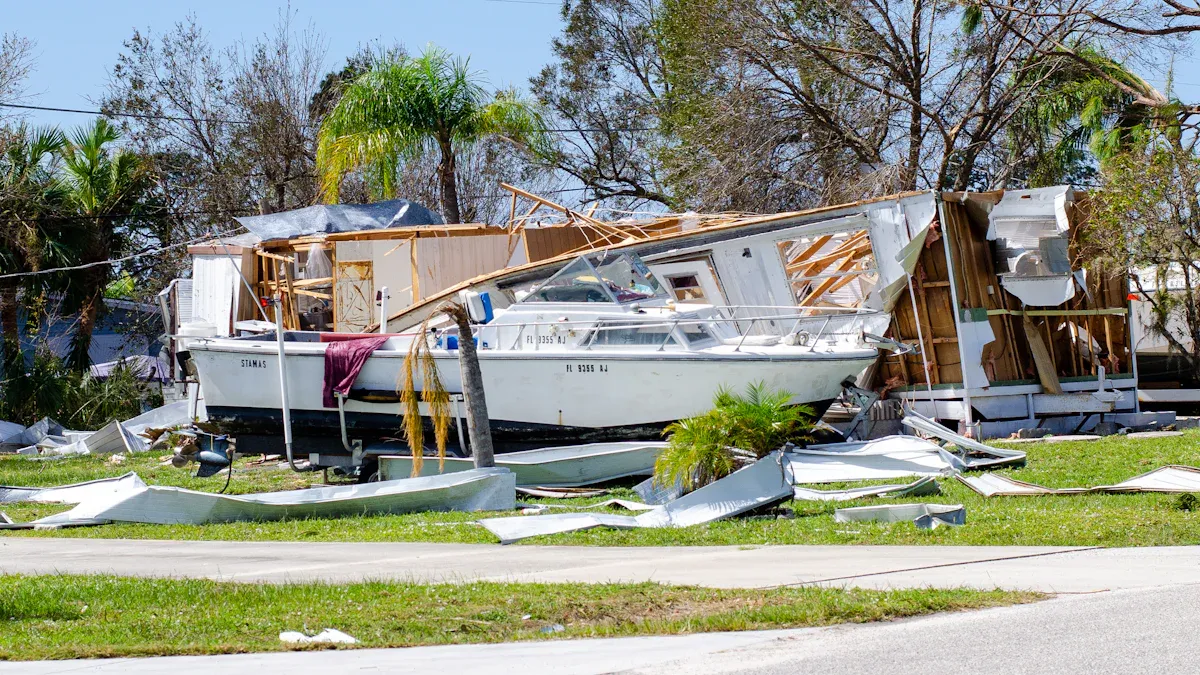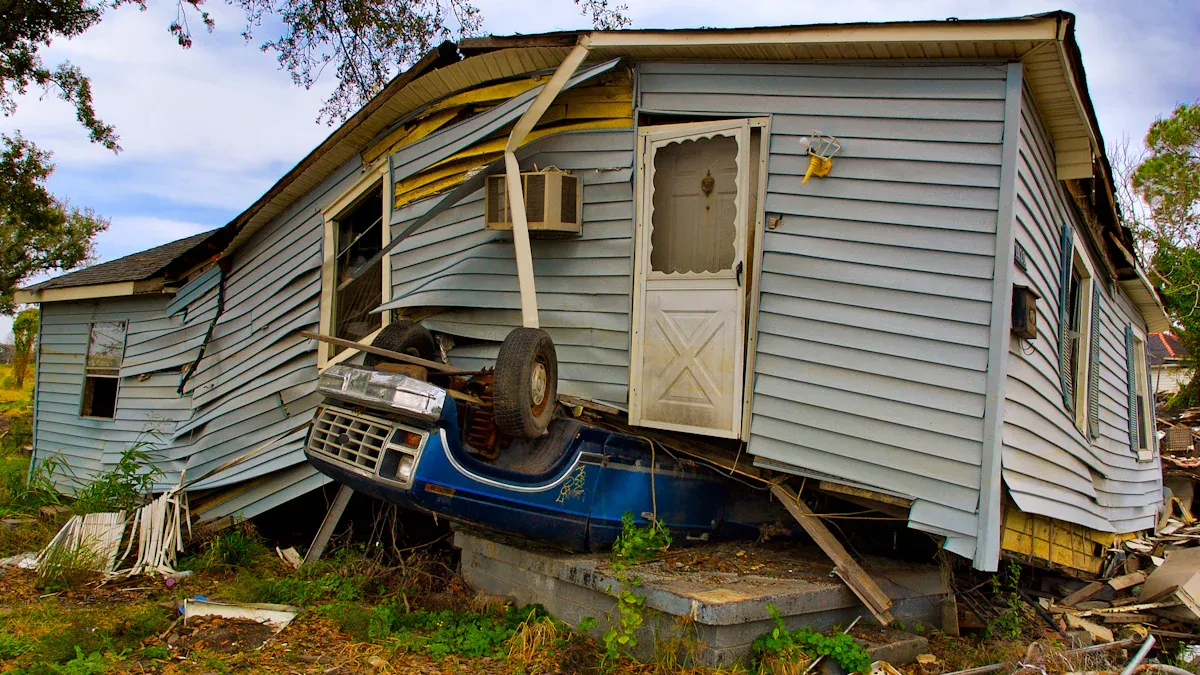
You may think your deductible is easy to understand, but the words in your policy can cause big surprises after a storm. Many homeowners do not know that hurricane or wind/hail? why your home insurance deductible wording really matters, especially when insurance uses percentage-based costs. Check your policy and avoid surprise costs.
Key Takeaways
Know your deductible type. It can be a flat dollar or a percentage. This changes how much you pay after storm damage.
Learn the difference between hurricane and wind/hail deductibles. Each one is used in different storm situations. This can change how much you have to pay.
Always read your insurance policy carefully. Ask your agent questions if you do not understand. This helps you avoid surprise bills. You will be ready for storm costs.
Understanding Deductibles

What Is a Deductible?
A deductible is money you pay before insurance helps. In home insurance, you pay some repair costs first. Your insurance pays the rest after you pay your part. For example, if your deductible is $1,000 and a storm causes $10,000 in damage, you pay $1,000. The insurance company pays $9,000. Deductibles are only for property damage, not for liability. You pick your deductible when you get your policy. The deductible you choose can change your premium. If you pick a higher deductible, your monthly payment is usually lower.
How Deductibles Affect Insurance Claims
There are two main types of deductibles: flat dollar and percentage-based. A flat dollar deductible is a set amount, like $1,000. If wind or hail causes $8,000 in damage, you pay $1,000. The insurance pays $7,000. Percentage-based deductibles are used for wind, hail, and hurricane claims. These deductibles are a percent of your home’s insured value. For example, if your deductible is 2% on a $300,000 home, you pay $6,000. Insurance pays the rest after you pay your part. This can mean you pay a lot more after a big storm.
Tip: Always look at your policy to see if your wind, hail, or hurricane deductible is a flat amount or a percentage. The deductible can be different depending on where you live and how risky storms are. People who live near the coast or in stormy places often have higher deductibles for wind, hail, or hurricane claims.
Type of Deductible | Example Amount | When Used |
|---|---|---|
Flat Dollar | $1,000 | Most basic claims |
Percentage | 2% ($6,000) | Wind, hail, hurricane |
Knowing your deductible helps you plan for costs after wind, hail, or hurricane damage. Always check your policy so you know what will happen.
Hurricane vs. Wind/Hail Deductibles

Hurricane Deductible
A hurricane deductible is a special part of your home insurance. It only works when a hurricane or named storm damages your house. The rule for using a hurricane deductible depends on official weather reports. For example, the National Weather Service or the U.S. National Hurricane Center must call the storm a hurricane or give it a name. If your house gets damaged during this time, the hurricane deductible starts.
You pay a percent of your home’s insured value before insurance pays. In high-risk states, this percent is usually 1% to 5%. Sometimes, it can be as high as 10%. For example, if your home is insured for $300,000 and your hurricane deductible is 5%, you pay $15,000 before insurance helps. This deductible is based on your home’s insured value, not the damage amount. States like Florida and Texas often use a 2% hurricane deductible. The amount can change depending on where you live and your risk.
The hurricane deductible only works if the storm is still a hurricane when it hits. If the storm gets weaker before reaching you, your policy may not use the hurricane deductible. Another deductible might be used instead. This shows why the exact words in your policy are very important. If you have hurricane coverage, always check how your policy explains a hurricane and when the deductible is used.
Wind/Hail Deductible
A wind/hail deductible is different. It covers damage from wind or hail, even if the storm has no name. This deductible works for many storms, like tornadoes, hailstorms, or strong winds. If wind or hail damages your roof, windows, or siding, your wind/hail deductible is used.
Like the hurricane deductible, the wind/hail deductible is often a percent of your home’s insured value. The percent is usually 1% to 5%. For example, if your home is insured for $200,000 and you have a 1% wind/hail deductible, you pay $2,000 before insurance pays the rest. In places like Tornado Alley or the Midwest, wind and hail deductibles are common because these areas get many storms.
Wind/hail deductibles can be higher in coastal or risky areas. Insurance companies use official weather warnings to decide when to use this deductible. If a hurricane causes the damage, the hurricane deductible is used. If a regular windstorm or hailstorm causes the damage, the wind/hail deductible is used.
Aspect | Wind/Hail Deductibles | Hurricane Deductibles |
|---|---|---|
Deductible Type | Percentage of home’s insured value (1% to 5%) | Percentage of home’s insured value (1% to 5%), sometimes higher in coastal areas |
Geographic Application | Common in Tornado Alley and Midwestern states | Common in coastal states prone to hurricanes |
Triggering Event | Applies broadly to any wind or hail damage | Triggered by specific hurricane-related events (e.g., NWS hurricane watch/warning) |
Deductible Options | Often percentage or flat dollar deductible | Often mandatory percentage deductible, no flat option in high-risk coastal areas |
Purpose | Covers general wind/hail damage | Covers hurricane-specific damage, tied to storm events |
Typical Deductible Range | 1% to 5% of insured value | 1% to 5%, sometimes higher in high-risk coastal areas |
Why Wording Matters
The words in your policy decide which deductible you pay after a storm. Some policies use a hurricane deductible only if the storm is a hurricane when it causes damage. Others use a named storm deductible for any storm with an official name, like tropical storms and hurricanes. A wind/hail deductible is used for any wind or hail damage, no matter the storm’s name or strength.
Note: The exact words in your policy can mean you pay a hurricane deductible or a wind/hail deductible. This can change your costs by thousands of dollars.
Here are some real-life examples:
If a hurricane hits your area and is still a hurricane, your hurricane deductible is used. If the storm gets weaker before it reaches you, your policy might use the wind/hail deductible instead.
After Superstorm Sandy, many people did not pay a hurricane deductible because the storm was weaker before landfall. They paid a lower wind/hail deductible instead.
If a hailstorm damages your roof, your wind/hail deductible is used, even if the storm is not named.
Some policies have more than one deductible for one event. For example, you might pay a hurricane deductible for wind damage and a separate flood deductible for water damage. If your policy says deductibles apply per building or per event, you could pay more than once after a big storm.
Many people think insurance will pay for all storm damage. This is not true. Some policies do not cover flood damage or have high deductibles for wind and hail. If you do not understand your policy, you could get big bills after a hurricane or wind/hail event.
Checking Your Policy
You need to know what your policy says about deductibles. Follow these steps to find and understand your deductible wording:
Find the declarations page in your policy. This page lists your deductibles for hurricane, wind, hail, and other events.
Read the policy form or jacket for details about when each deductible applies.
If you have a digital copy, use the search tool to look for the word “deductible.”
Check if your policy uses a percentage or flat dollar deductible for hurricane or wind/hail events.
Look for special rules about when a hurricane deductible or wind/hail deductible is triggered. Pay attention to words like “named storm,” “hurricane,” or “windstorm.”
If you do not understand the wording, contact your insurance agent. Ask them to explain which deductible applies to hurricane or wind/hail damage.
If you are unhappy with your deductible or coverage, shop around. Compare policies from different companies. Ask about discounts or options for a higher deductible if you want to lower your premium.
📝 Tip: Insurance companies often change policy wording. Review your policy every year to stay up to date. Use trusted resources like Claimguide.org or talk to a public adjuster or insurance lawyer if you need help.
Not understanding your deductible can cause big money problems. For example, if you have a 4% hurricane deductible on a $250,000 home, you must pay $10,000 before insurance pays for hurricane loss. If you do not know this, you might not have enough savings to pay. Always check your policy and ask questions to avoid surprise bills after a hurricane or wind/hail event.
Knowing what your deductible means keeps your money safe.
Talk to your agent if you do not understand something.
Be sure you can pay your deductible if you need to make a claim.
If you get ready now, you will not be surprised or worried about costs after a storm.
FAQ
What happens if you cannot pay your deductible after a storm?
You have to pay your deductible first. Insurance will not pay until you do. If you cannot pay, repairs might take longer. It is smart to save money for your deductible.
Can you change your deductible amount?
Yes, you can talk to your insurance agent about this. If you pick a higher deductible, your monthly cost goes down. If you pick a lower deductible, your monthly cost goes up.
How do you know which deductible applies after a storm?
Read your policy to see what it says. Look for words like “hurricane,” “named storm,” or “wind/hail.” If you are not sure, ask your agent for help.
